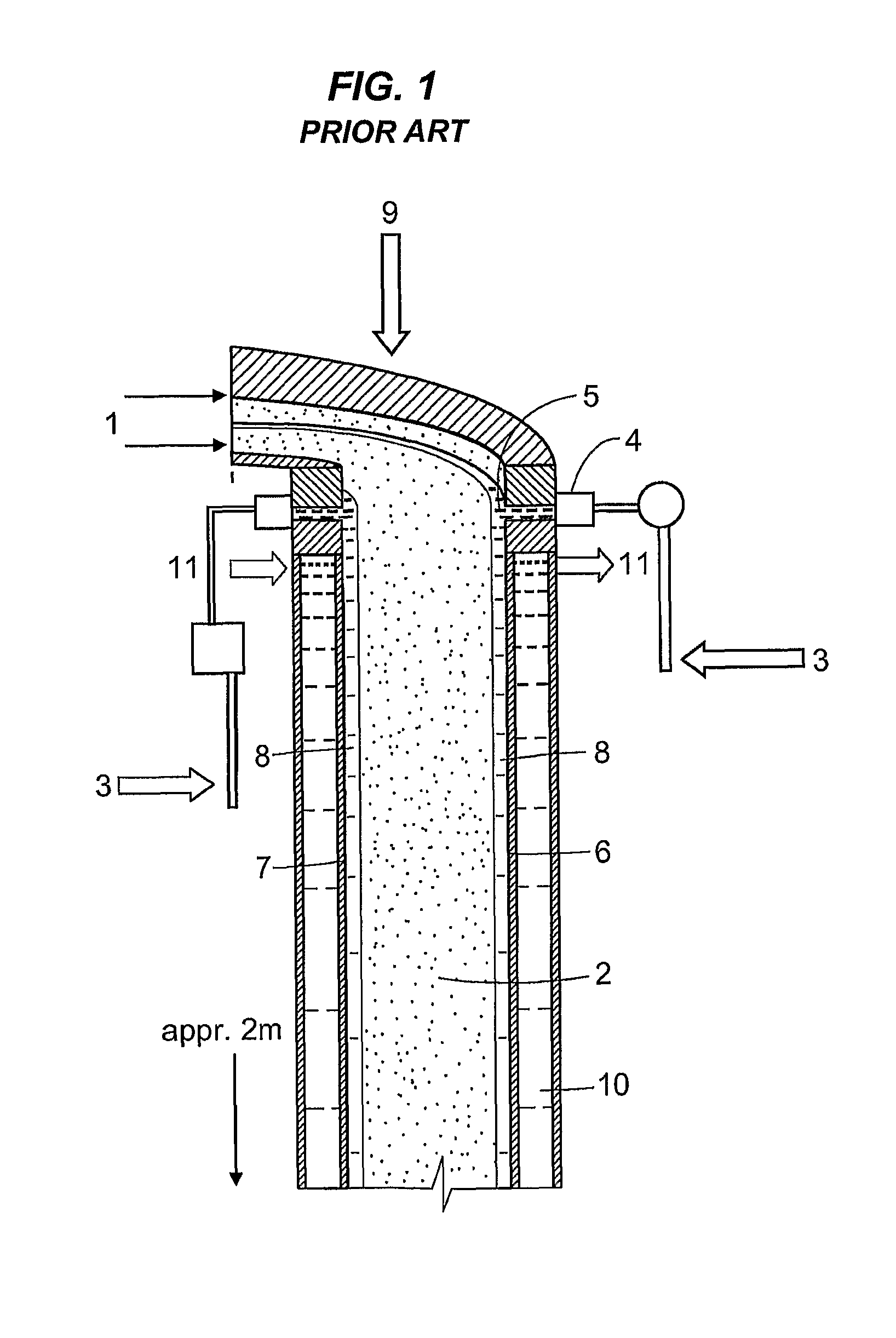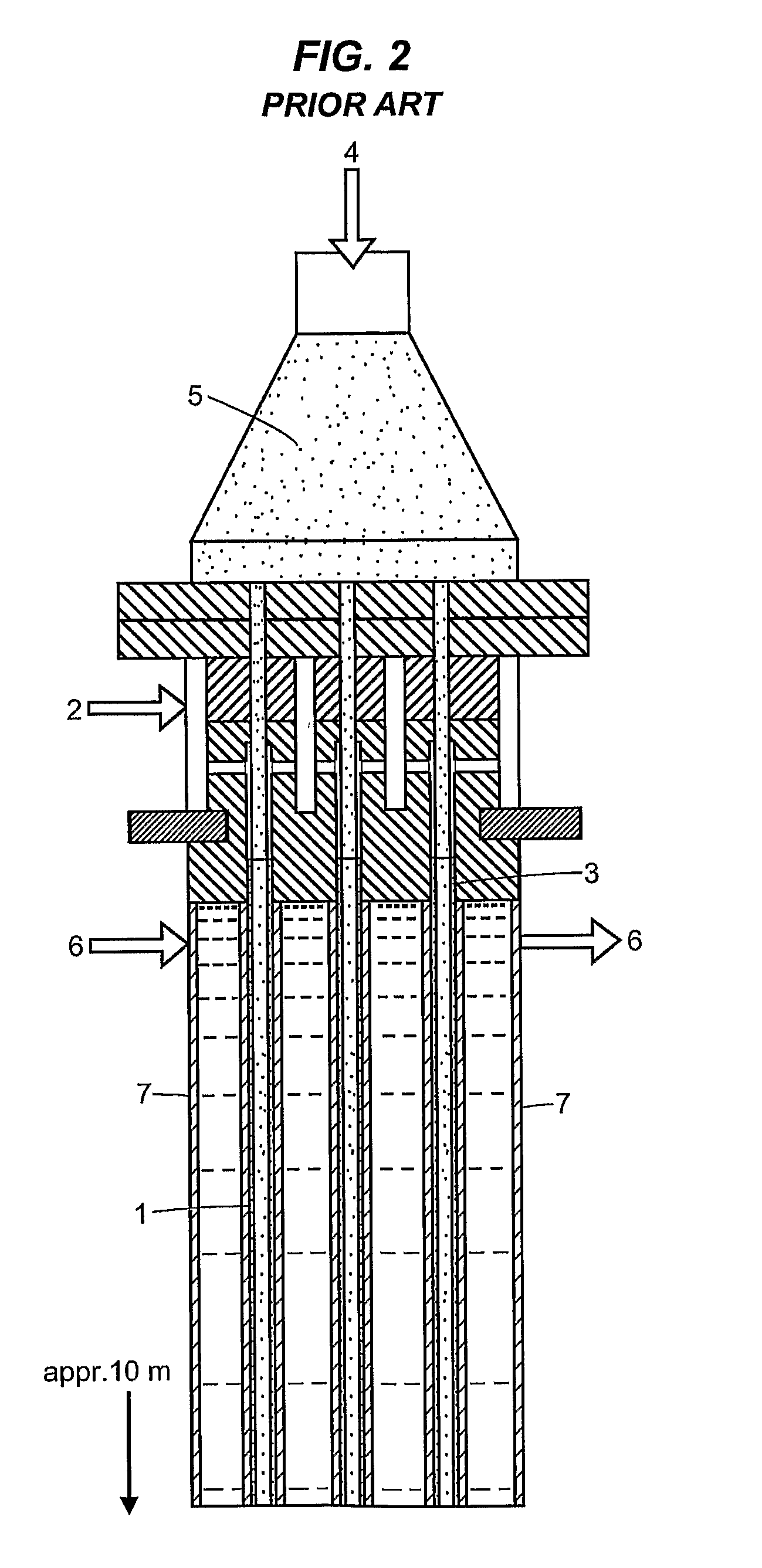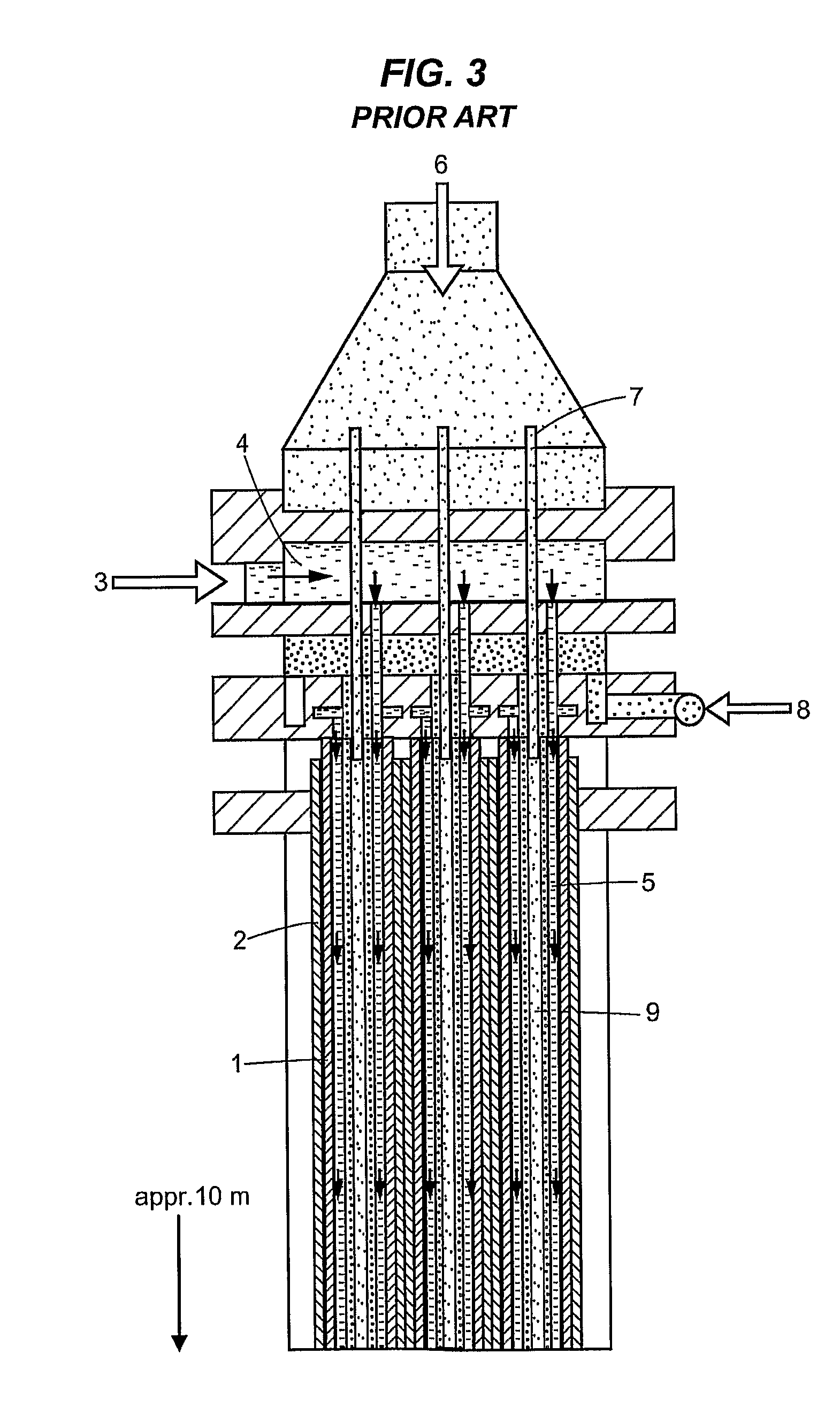Method and device for the sulfonation or sulfation of sulfonatable or sulfatable organic substances and for performing faster, strongly exothermic gas/liquid reactions
a technology of organic substances and sulfonation methods, which is applied in the preparation of sulfuric acid esters, liquid gas reactions of thin-film type, physical/chemical process catalysts, etc., can solve the problems of unsatisfactory product quality, unsatisfactory yield and color of reaction products, and high cost of reactor systems, so as to achieve rapid, highly exothermic gas/liquid reactions
- Summary
- Abstract
- Description
- Claims
- Application Information
AI Technical Summary
Benefits of technology
Problems solved by technology
Method used
Image
Examples
example 1
Preparation of Laureth (2EO) Sulfate, Sodium Salt in an Annular-gap Falling-film Reactor According to the Invention
In the embodiment of an annular-gap falling-film reactor according to FIG. 5, a thin-walled (approx. 0.5 mm) double tube (3) having an outside diameter 124.1 mm, inside diameter 116.9 mm, and gap of 2.6 mm was built centered into the annular gap (annular space) (2). The overall tube distance (wall thickness plus gap) was 3.6 mm and the length was 330 mm. The diameter of the reactor (inside diameter of the outer tube(1)) was 5 inches (127 mm) with a reactor length of 1650 mm, with an annular gap (2) width of 6.5 mm, each having a raw material (4) distributor slit (5) on the inner wall (6) of the outer tube (1) and on the outer wall (7) of the inner tube (1) and each with a cooling mantle (14) (see FIG. 5). The diameter of the inner double tube (3) was dimensioned so that the SO3 gas was introduced in an amount of 50% through the annular gap (2) in the upper reaction zone...
example 2
Preparation of Laureth (3EO) Sulfate, Sodium Salt, Liquid in an Annular-gap Falling-film Reactor According to the Invention
In the embodiment of an annular-gap falling-film reactor, a thin-walled double tube with a tube distance (gap) of 3.6 mm and a length of 330 mm was incorporated into the annular gap. The diameter of the reactor was 5 inches (127 mm) with a reactor length of 1650 mm and an annular gap width of 6.5 mm, with one raw material distributor slit each on the inner wall of the outer tube and on the outer wall of the inner tube and each having a cooling mantle (see FIG. 5).
A C12 / 14 fatty alcohol ethoxylate (fatty alcohol=ALFOL C12 / C14, C12 content 51-57%, C14 content 41-47%, molecular weight 196) with 3 mol of ethylene oxide (molecular weight 328, APHA color number=10) were introduced through the two distributor slits in an amount of 297 kg / h (mass flow meter) (=0.906 kmol / h of fatty alcohol ethoxylate) at a temperature of 40° C. uniformly onto the two annular gap surface...
example 3
Preparation of α-olefinsulfonate, Sodium Salt in an Annular-gap Falling-film Reactor According to the Invention
In the embodiment of an annular-gap falling-film reactor, a thin-walled double tube with a tube wall distance (gap) of 6.5 mm and a length of 120 mm was incorporated into the annular gap. The diameter of the reactor was 5 inches (127 mm) and the length was 2 m with an annular gap width of 10 mm, and having one raw material distributor slit each on the inner wall of the outer tube and on the outer wall of the inner tube and each having a cooling mantle (see FIG. 5).
A C12 / 16 α-olefin (C12 max. 2%, C14=62-70%, C16 content 29-37% with a molecular weight of 214, APHA=30) was introduced through the two distributor slits in an amount of 165 kg / h (mass flow meter) (=0.772 kmol / h of α-olefin) at a temperature of 40° C. uniformly onto the two annular gap surfaces. The diameters of the inner double tube were dimensioned so that the 50% of the SO3 gas was introduced through the annular...
PUM
| Property | Measurement | Unit |
|---|---|---|
| diameter | aaaaa | aaaaa |
| molar ratio | aaaaa | aaaaa |
| diameter | aaaaa | aaaaa |
Abstract
Description
Claims
Application Information
 Login to View More
Login to View More - R&D
- Intellectual Property
- Life Sciences
- Materials
- Tech Scout
- Unparalleled Data Quality
- Higher Quality Content
- 60% Fewer Hallucinations
Browse by: Latest US Patents, China's latest patents, Technical Efficacy Thesaurus, Application Domain, Technology Topic, Popular Technical Reports.
© 2025 PatSnap. All rights reserved.Legal|Privacy policy|Modern Slavery Act Transparency Statement|Sitemap|About US| Contact US: help@patsnap.com



